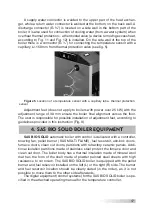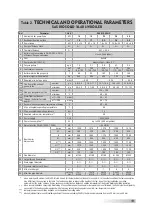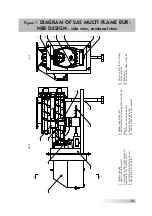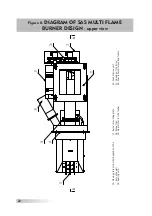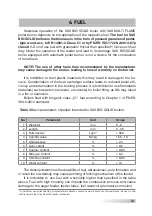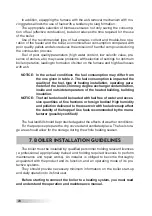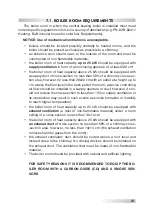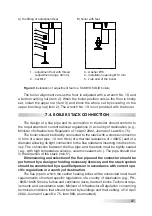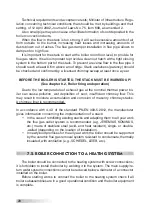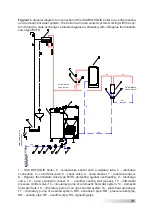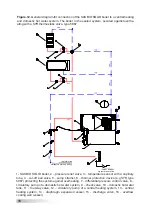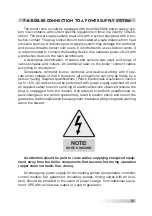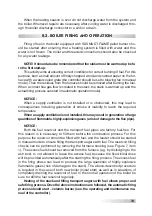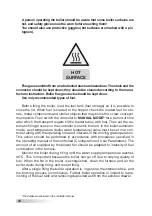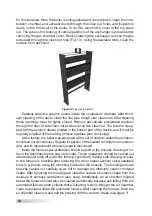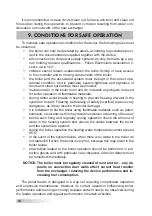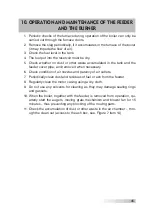
30
SAS BIO SOLID boilers can also work with a water based central heating sys-
tem through a heat exchanger. Due to a small water capacity of the open vented
system, installation of a thermal protection valve is recommended as protection
against overheating. A sealed heating system is located downstream from the
exchanger. An example of the SAS BIO SOLID boiler installation in a central he-
ating and domestic hot water system with a heat exchanger is shown in Fig. 11.
The standard boiler equipment includes a connector for a temperature sensor
with a capillary tube (item 2); the temperature sensor is installed in the hottest
part, at the top of the boiler. A thermostat valve, e.g., Regulus type BVTS (optio-
nal) (item 8) is thermal protection device protecting against overheating for the
boiler installed in an open vented system working with the system through a heat
exchanger. During normal operation the valve protecting against overheating is
closed and blocks supply of cold water from the water system to the heating
system. When boiler is overheated (jacket temperature above 95°C), the ther-
mostat valve installed on the boiler opens, and supplied water from the water
system cools the boiler, leaves the system through an overflow pipe (RP) of an
open expansion vessel (item 10) flowing to a cooling well (item 11), and then to
a sewage system.
Direct discharge of hot water from boiler cooling is forbidden and unac-
ceptable, as this may damage the sewage system.
When the temperature in the sensor environment drops below 95°C, the re-
lief valve is closed automatically and water flow from the overflow vessel is stop-
ped. The pressure reducer (item 7) on the thermostat valve inlet automatically
controls and maintains constant, stable flow conditions for cold cooling water,
regardless of pressure fluctuations upstream from the valve. A pressure of water
from the water supply system should be reduced to ca. 1.5 bar. A thermal pro-
tection device (item 8) installed on the cold water inlet prolongs its life, because
the valve is protected against contamination with calcifications caused by hot
water leaks. A sump strainer (item 6) must be installed on the cooling water inlet
to stop mechanical contaminations, thus protecting the opening against sedi-
ments and other foreign material (e.g., small grains of corrosion and metals)
which could be deposited in the valve seat resulting in its failure. A check valve
(item 5) protecting against possible water outflow from the system into the water
supply system is installed on the water supply duct.
In the event of power outage, circulatory pump failure or no heat consumption
by the system, the valve protecting against overheating (item 8) can effectively
cool the boiler to a safe temperature, preventing damage to the boiler and the
system in just few minutes. Reliable function of the temperature sensor is ensured
by two independent thermostat components. Each of them is equipped with its
own sensor and casing. When one of this unit is damaged, the other is still able
to open the valve.


